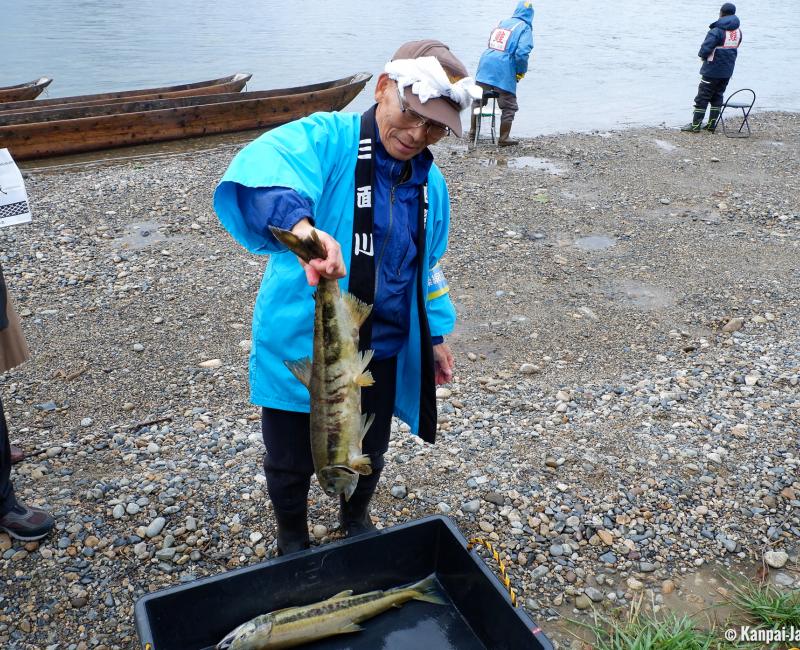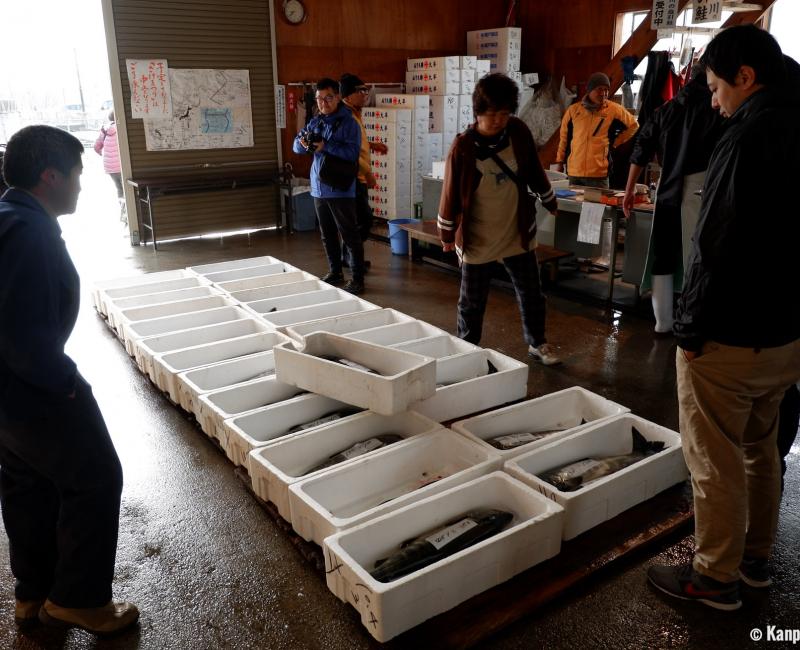Salmon Fishing on Miomote River
The Autumn Attraction in Murakami
Murakami is a small town in the north of Niigata known as the "capital of salmon." The city enlivens each year in autumn, when salmons head from the Sea of Japan upstream the Miomote River to spawn in its freshwater. The inhabitants then display the various original methods they have developed to fish, preserve and cook salmon.
A food and wealth blessing for the little city of Murakami, salmon has been abundantly fished since the end of the Middle Ages. However, the decline of the species, in the middle of the Edo period (1603 – 1868) was the cause of a great financial crisis for the clan ruling the region at the time.
It was thanks to the cleverness of Buheiji Aoto, a samurai of Murakami, that a solution was found. He trod the banks of the river, talking to the inhabitants, and precisely studying the spawning and migration of salmons. From what he could observe, he designed a fishing method to help naturally restock the fish resources. In the span of a few years, the salmon stock quickly increased and Buheiji Aoto became a respected local hero. His conservation plan, that limits harvest to specific areas, is still implemented. Nowadays, fish harvesting has greatly decreased compared to Aoto’s Golden Age, and represents about 10,000 salmons over a season.

A still efficient traditional fishing
Miomote River, that wells from Mount Asahi, a few dozen kilometers east of Murakami, crosses the center of the city before flowing into the Sea of Japan. The banks of the river in early morning are the places to be to discover the ancestral fishing tradition, the iguriamiryo (居繰網漁), mostly performed by middle-aged fishermen.
The iguriamiryo fishing method does not use fishing rods, hooks nor modern accessories to catch the salmons. Instead, two long canoe-like wooden boats are set adrift and carried by the flow of the river. They are connected by a large fishing net stretched in the water, held by fishermen standing on each of the narrow crafts. They then just have to haul the salmons trapped as they are swimming upstream. Other methods are also used, such as submersible metal cages trapping the fish during the night. Connected to each other from shore to shore, they slow down the salmons’ trip and therefore create a good fishing spot.

From the river to the plate
When closing to the riverbank, one can also spot more conventional fishermen, with a rod and on their seat, patiently waiting for a catch. However, don’t be deceived by their elderly look: they are seasoned hunters who act fast when they detect an incoming prey. In the blink of an eye, the salmon, usually weighing from 3 to 7 kg, is fished out from the river and is convulsing on the ground. Then, a fisherman assistant hits the fish on the head to kill it. The method might seem somehow barbaric and the most sensitive spectators are advised to stay well behind the safety areas.
After that, male and female salmons are sorted out and placed in containers. They will be brought later to a nearby warehouse where their respective semen and eggs will be collected to supply a fish farm and its hatcheries. This process helps to increase the annual production and provides Murakami’s restaurants with salmon, which is the main specialty dish.
Many households have their own technique to salt their salmon. Named shiobiki-zake, the preparation is also called toshitori-zakana when the salmon is cooked to be eaten specifically on the New Years’ day. Sake 🍶-no-sakabitashi namely salmon soaked in Japanese sake, is another popular dish made by drying the shiobiki-zake until the beginning of the rainy season ☔️ in June. It is thereupon finely sliced and eaten with ginger. It is said there are more than a hundred of salmon dishes in Murakami, and incidentally, as many occasions to discover new tastes!

